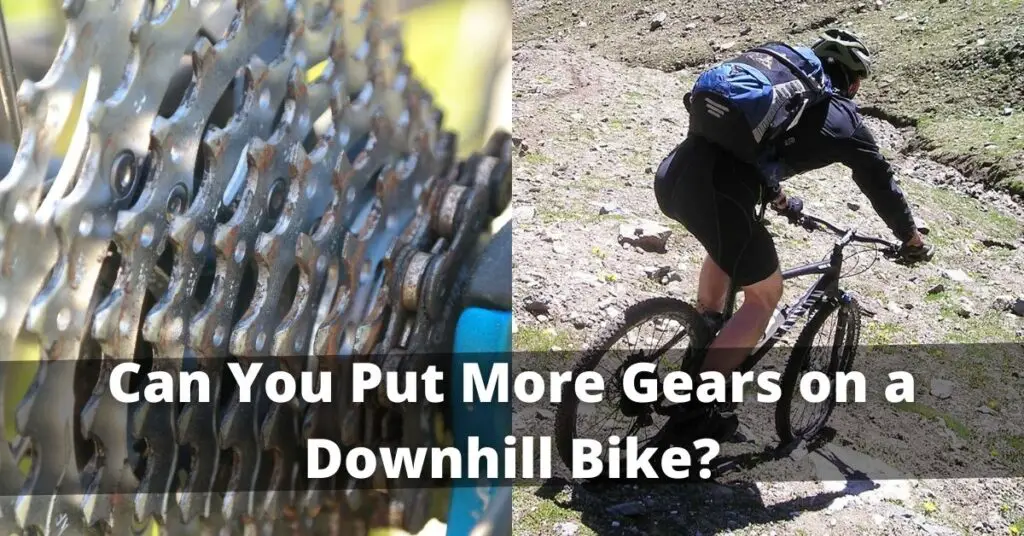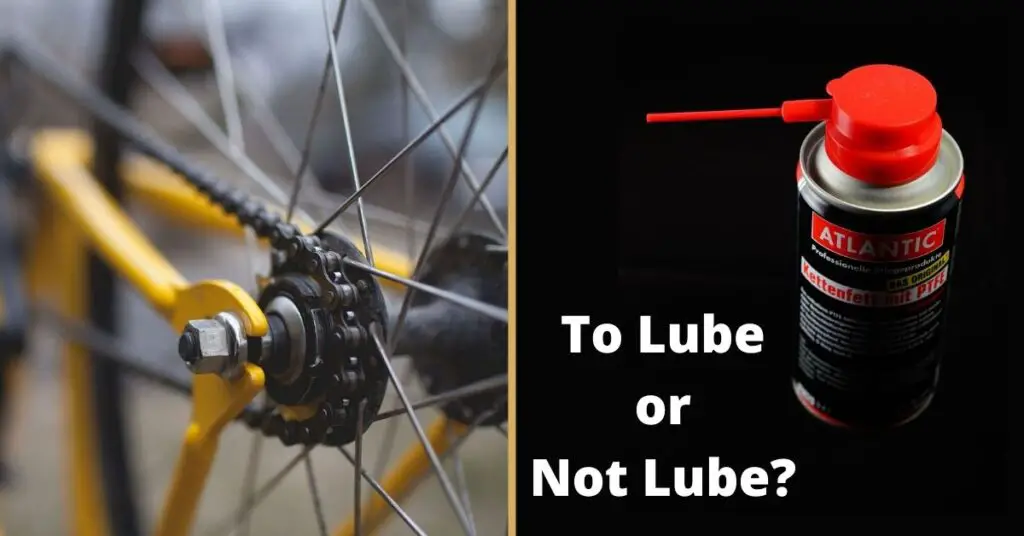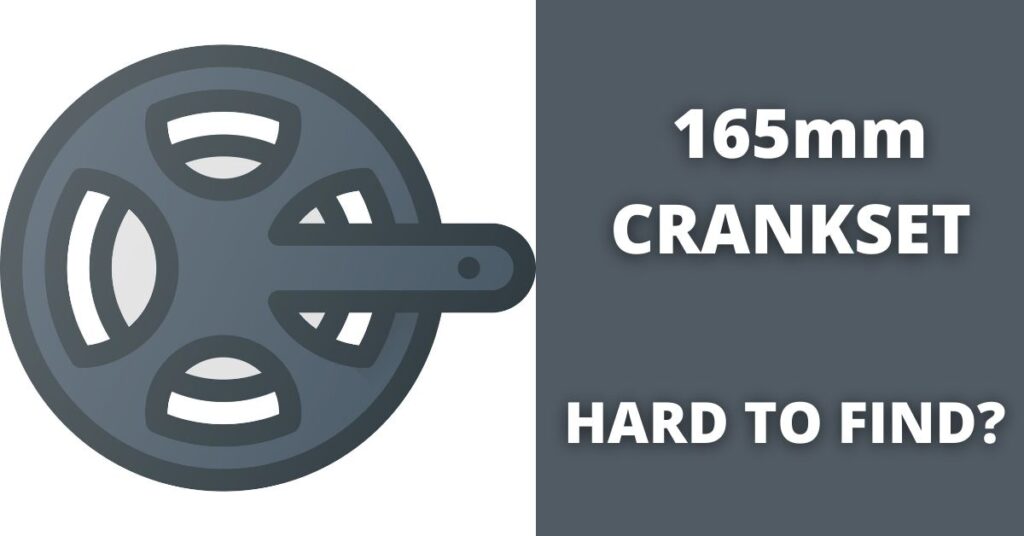Downhill bikes are types of mountain bikes that are specifically designed to cycle downhill. Both wheels are fully suspended to give these bikes the needed speed to get down a hill fast.
Downhill bikes however come with fewer gears, compared to standard mountain bikes. This is an advantage when descending steeps but makes it difficult to go uphill with downhill bikes, and also makes pedaling difficult.
In this article, we’ll be answering your questions about downhill bikes; why they have fewer gears, if you can add more gears to them, and other questions that may be on your mind similar to these.

Can You Put More Gears on a Downhill Bike?
Yes, you can put more gears on a downhill bike. It’s not something difficult to do at all and it would only enhance the bike and make it available for more options. You can even do it if you want, you just have to have the necessary tools and components.
As we proceed in the article, we’ll guide you in simple steps on how to add more gears to your downhill bike.
Why Do Downhill Bikes Have Less Gears?
Downhill bikes usually come with 1 chainring in the front and 9 gears/cogs at the back. That’s way lesser than most bikes have and we’ll be discussing why they are built this way.
1- Less Weight
Fewer components/parts on a bike mean less weight. Downhill bikes are usually heavy because they are made with bigger frames, wheels, and some other major components.
More gears would have added to this weight considerably and may make handling a bit difficult. Using 1 chainring in the front means there’s no use for a front derailleur which is good for your bike.
2- Quicker Shifting
When you have more than a chainring on the front frame, there’s a need for a front derailleur. While riding, there’s a need for you to slow down before shifting, so you can ensure that the chain shifts properly unto the next chainring.
When your bike has fewer gears you don’t have to worry about this problem. Since you have just 1 chainring, the front derailleur is non-existent and shifting becomes faster. You don’t have to slow down to shift.
3- Less Worries
Having fewer gears means you have fewer components to worry about and fewer components to maintain.
Riders often worry about dropping chains while riding and with downhill bikes, there’s more risk of this if there are more gears. This is because the chances of front derailleurs dropping chain while descending fast are high, and downhill bikes are made to descend at high speed.
Having no front derailleur helps you descend without those worries.
4- It’s NOT Needed
Why have more gears on a downhill bike when it’s not needed? If you’re staying true to what your downhill bike is built for, you don’t need a lot of gears.
Downhill bikes come with fewer gears because that’s all they need to go downhill at a very high speed. They aren’t built for climbing or trails where more gears are needed.
How Many Gears Should a Downhill Bike Have?
Downhill bikes shouldn’t have many gears since they aren’t needed. 1 chainring at the front and about 7-9 gears at the back is enough to do what downhill bikes are built for.
You only need more gears on your downhill bike if you want to use your bike for other activities it was designed for.
Why Would You Need More Gears on a Downhill Bike?
1- Easy Climb
More gears on a downhill bike will help you climb easier and ride faster. Downhill bikes are built especially for downhill cycling but you may want to use them for something more than that.
Occasionally you may want to go hill climbing or ride with friends, and getting another bike for that would be expensive.
Take note that adding more gears won’t remove the ability to descend fast from your downhill bike, it would just turn it into a multipurpose bike that can descend fast, as well as climb.
2- Easy Pedaling
Pedaling is difficult on downhill bikes because it has fewer gears and they weren’t made to pedal that much. You don’t need to pedal while descending a steep at high speed, but it becomes an issue when you want to climb with your bike or ride with friends on flat terrains.
Take note that downhill tracks sometimes have uphill parts and flat terrains too, so you need to be able to pedal which will also help you to accelerate smoothly.
To achieve this, you need to add more gears to your downhill bike. There’s no way around it.
How to Add More Gears to a Downhill Bike?
There are two ways you can add more gears to your downhill bike. Whichever one you choose will enable you to use your bike to climb and pedal adequately. It may not do these as perfectly as trail bikes do, but there would be a considerable improvement.
1- You can change the cassette to one that has more gears. If your downhill bike uses 7 rear sprockets, you could change it to 10, 11, or more.
2- You could change the cassette to one that has the same number of gears, but a wider range. The cogs would be farther apart.
Using a Cassette with More Gears
For this first option, you can use a cassette that has as many gears as up to 12. You could go for the Shimano 12 speed cassette or the new SRAM’s Eagle system 12 speed. With these, you can make the jumps you want with your downhill bike, climb easier and also pedal efficiently.
Bear in mind though, the cassette alone cannot be changed. Your chain, shifters, and derailleurs must all match.
The larger cassette will require different amounts of pull on the gear cable and would not fit with the right shifter already installed in the bike.
You would also need a new derailleur that would be able to accommodate the large sprockets, which also must be a match for your new shifters.
A rear derailleur with a medium or long cage would be ideal. Take the pull ratio into consideration too.
Ensure you also use the proper chain length. If you’re going for Shimano’s 12-speed cassette, use a Shimano 12 speed chain too.
Using a Cassette with a Wider Range of Gears
You also have the opportunity to stick to the same number of gears but with wider gears. This option is cheaper and easier. More gears don’t necessarily mean more jumps or climbing, it all has to do with gear ratios, which you can get by opting for this option.
The cogs would be more spaced and the cassette would appear bigger too so you may need a new rear derailleur. But if your current derailleur can take the upgrade, you don’t have to worry.
You may need to change your shifters to accommodate the wide range of gears and ensure it has the right number of clicks.
What Gear Should I Use for Downhill?
Whether on downhill bikes or other types of bikes, it is important you use the right gear to descend. This will help you descend smoother, safer, and faster.
The right gear to go downhill is the highest/hard gear. You can achieve this by shifting your chain onto the largest chainring in the front and on the smallest cog in the rear. Maintaining this position is necessary if you want to enjoy your descent.
Your left shifter is what you can use to shift your chain onto the chainring. That is the shifter that controls your front derailleur.
Your right shifter on the other hand is what enables you to shift your chain onto the smallest sprocket on your cassette. This controls your rear derailleur.
Shifting chain in the front is not necessary for downhill riders since you have just a chainring and do not have a front derailleur.
While descending on this gear pedaling would be difficult but you would be moving very fast. This isn’t even an issue as you don’t necessarily need to pedal while descending that fast.
The reverse is the case if you want to go uphill. Shift your chain onto the smallest chainring in the front and the largest sprocket in the rear. This is called the lowest gear. Pedaling is much easier with this gear and can be used on flat terrains in addition to climbing.
Final Thoughts!
Downhill bikes are fun if you are all about descending fast and enjoy races like this. They aren’t good for climbing but you can change that by adding more gears. We’ve discussed all that and also how you can achieve this.
Changing your downhill bike into a multi-purpose bike that can descend fast as well as climb, can be pretty expensive. Sometimes getting a trail bike might be cheaper and wiser. But it’s all about your choice and why you want to modify your bike.
Cheers!




